Understanding French Environmental Cost: 10 Essential Questions
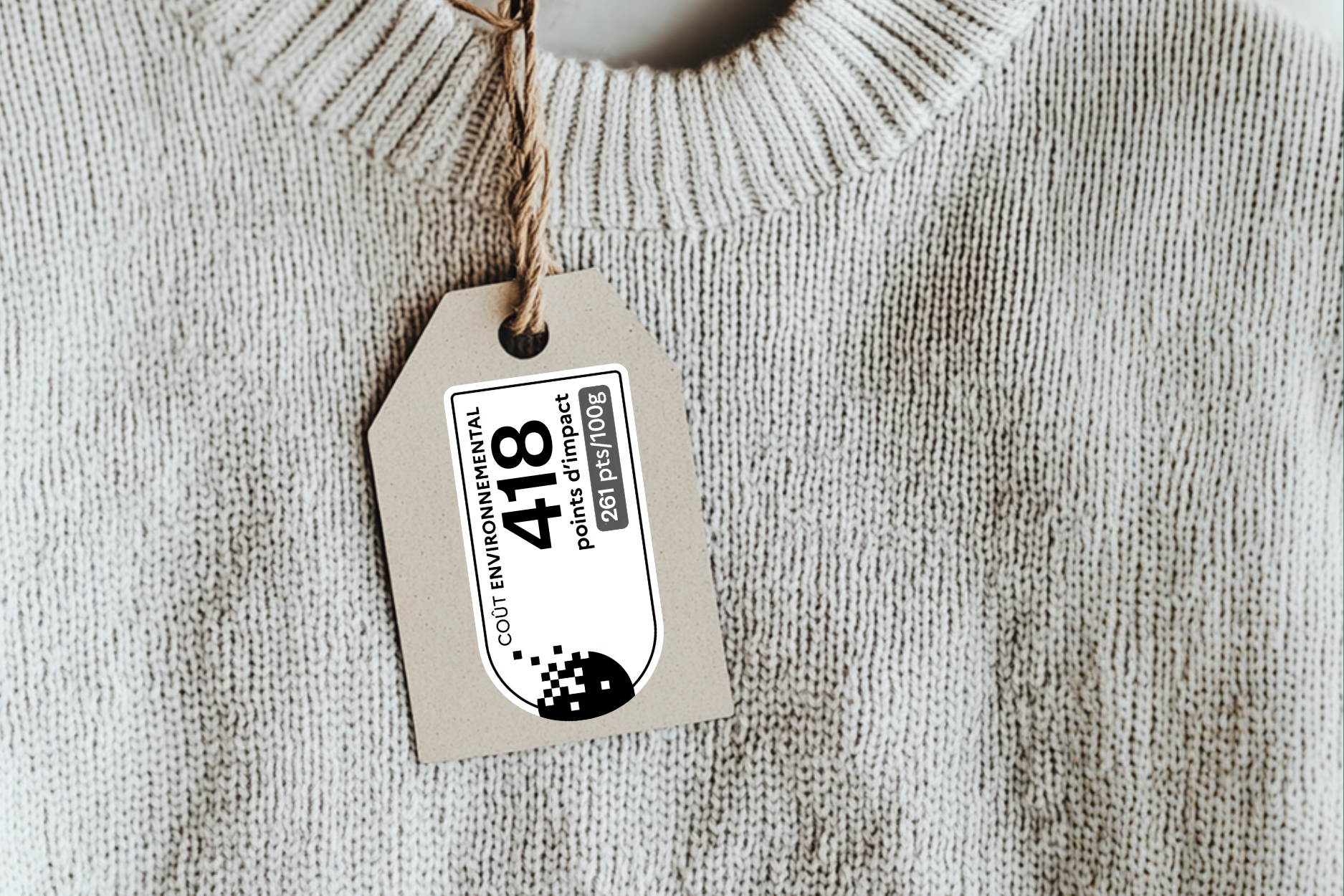
France has long been a leader in sustainable initiatives, especially in the fashion industry. With increasing attention on the environmental impact of products, the French environmental cost has officially entered into force on October 1, 2025. Madeline Czarnik, a traceability and LCA analyst at Fairly Made, recently highlighted 10 essential questions about this emerging framework. Here’s a deep dive into what you need to know.
1. When Does the French Environmental Cost Come Into Effect?
The French environmental cost framework has begun voluntarily on October 1, 2025. Key dates leading up to this included:
- Summer 2025: Validation of the text by the Council of State.
- September 9, 2025: Publication of the decree.
- September 15, 2025: Opening of the government portal for score submission.
- September 24, 2025: ADEM webinar explaining the methodology.
This voluntary phase allows brands to start integrating environmental cost data and prepare for broader adoption.
2. Which Products Are Concerned?
The environmental cost framework primarily targets textile garments, including both new and upcycled products. Specific items covered include:
- Socks
- Shirts
- Sweaters
- Pants and shorts
However, shoes, leather goods, home textiles, garments made of fur, and leather are currently excluded. The scope may expand over time, but these categories are the initial focus.
3. What’s Included in the Environmental Cost?
The environmental cost is calculated through a Life Cycle Analysis (LCA). This includes:
- 16 environmental indicators such as water usage, carbon footprint, and resource depletion.
- Additional impacts outside the LCA, including microfiber release and exports outside the EU.
The final score is adjusted for the number of uses and durability factors, both physical and non-physical, giving a comprehensive view of the product’s impact.
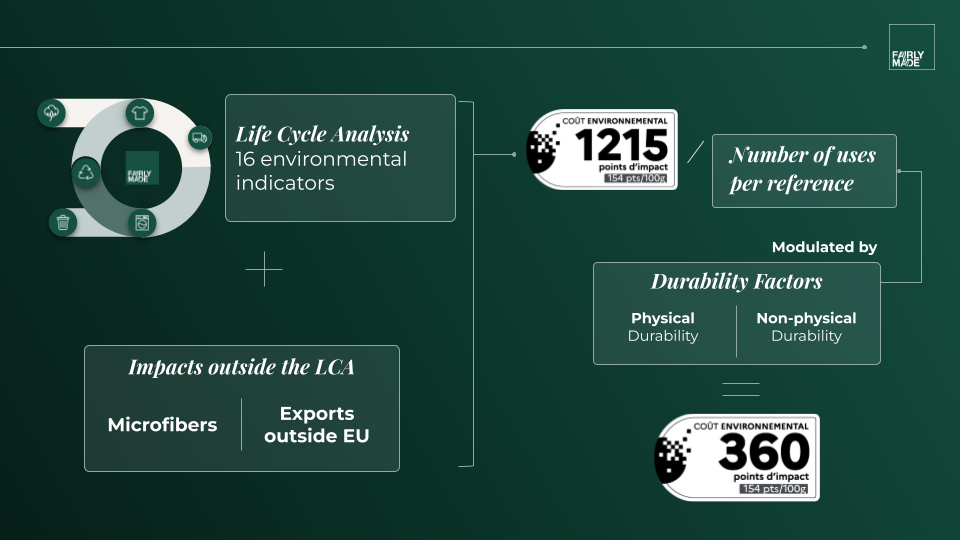
4. Why Measure Environmental Costs?
The main goal of the environmental cost is transparency. Consumers gain access to a single, clear score, enabling informed purchasing decisions. For brands, it encourages eco-design, helping to produce more sustainable products in the future. By understanding the environmental impact, companies can innovate and reduce their ecological footprint.
5. How Is the Score Interpreted?
The environmental cost score is intuitive: the higher the score, the greater the environmental impact. It’s displayed as:
- A main score reflecting the overall environmental impact.
- A smaller score indicating the impact per 100 grams of the product.
Think of it as a “pre-price” in environmental terms: consumers can easily compare products’ ecological footprints.
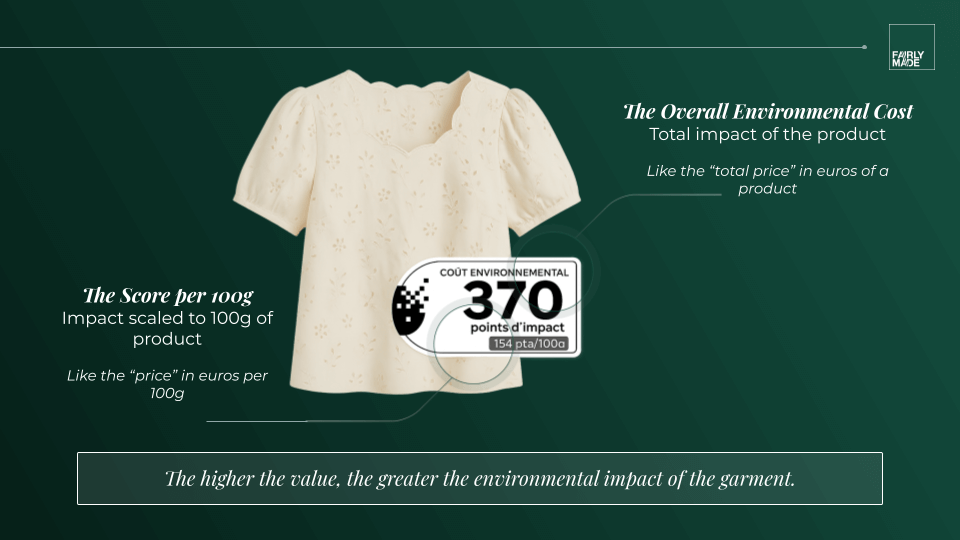
6. Is the Environmental Score Compulsory?
Currently, the score is voluntary. Brands can display it if they wish. However, if a company makes additional environmental claims, including the score becomes mandatory. Compliance ensures transparency and avoids potential penalties.
7. How Can Brands Communicate the Score?
There are several ways to present the environmental cost to consumers:
- Product showcase or widget on e-commerce sites.
- QR codes linking to detailed information, which is compliant with regulations.
- Physical labels on hang tags or shelving displays next to the price.
The official logo, supported by the Minister of the Ecological Transition, must be used when showing the environmental cost.
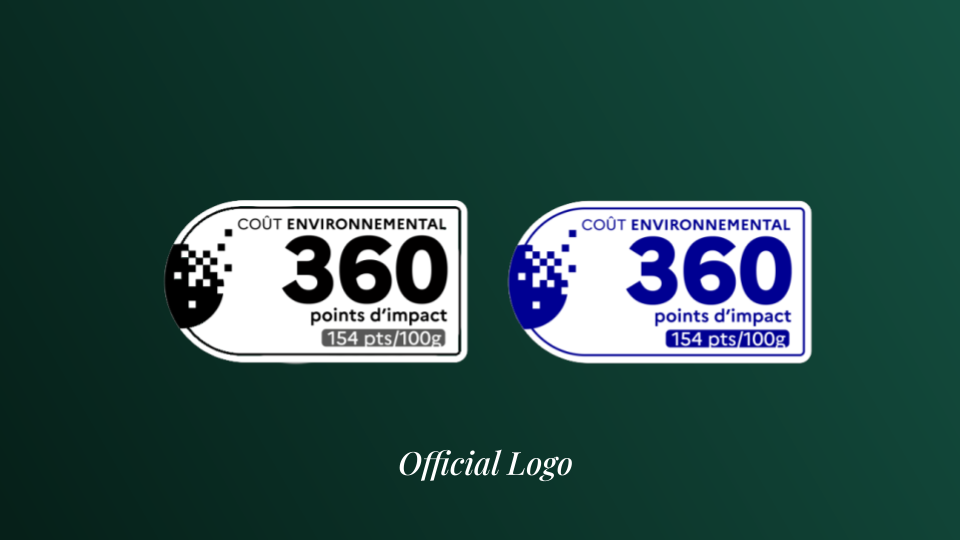
8. How Are Scores Declared?
Scores can be declared via the government portal starting September 15, 2025. Brands have two options:
- Self-declaration on the platform.
- Third-party assistance through companies like Fairly Made, which can submit scores on behalf of brands.
Data is also available for extraction through an automated API, facilitating integration with brand systems.
9. Are There Sanctions for Non-Compliance?
Even though the labeling is voluntary, failure to comply, especially when additional environmental claims are made without displaying the score, can result in:
- Up to €3,000 for individuals.
- Up to €15,000 for legal entities.
These penalties are governed under the French Consumer Code.
10. How Can Fairly Made Support Brands?
Fairly Made provides end-to-end support in implementing environmental costs:
- Collecting brand and supplier data.
- Updating brand settings via their dedicated app.
- Calculating the environmental cost and LCA.
- Publishing scores through QR codes, URLs, and official signage.
- Declaring scores on the government portal to ensure legal compliance.
This guidance helps brands navigate the regulatory landscape while promoting sustainability.
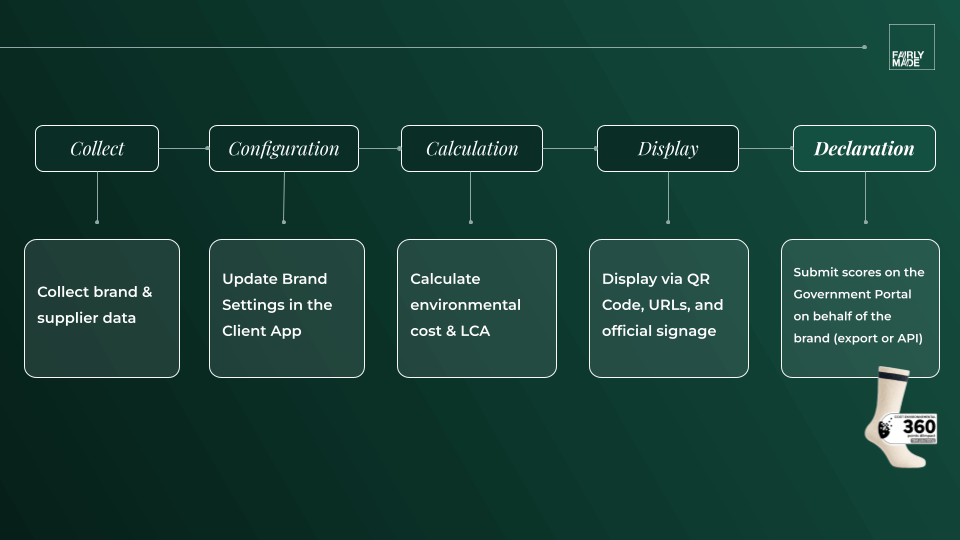
Why French Environmental Cost Matters
The French environmental cost is more than just a number. It’s a tool for transparency, consumer education, and sustainable innovation. By standardizing environmental impact across the fashion industry, France is leading the way in responsible production. For brands and consumers alike, understanding these 10 essential questions ensures preparedness for a more transparent future.
As France takes the lead in eco-labeling, the environmental cost framework sets a precedent that other countries may follow, ultimately contributing to a more sustainable global fashion industry.


%20for%20Apparel%20-%20The%20Ultimate%202025-2026%20Guide.png)

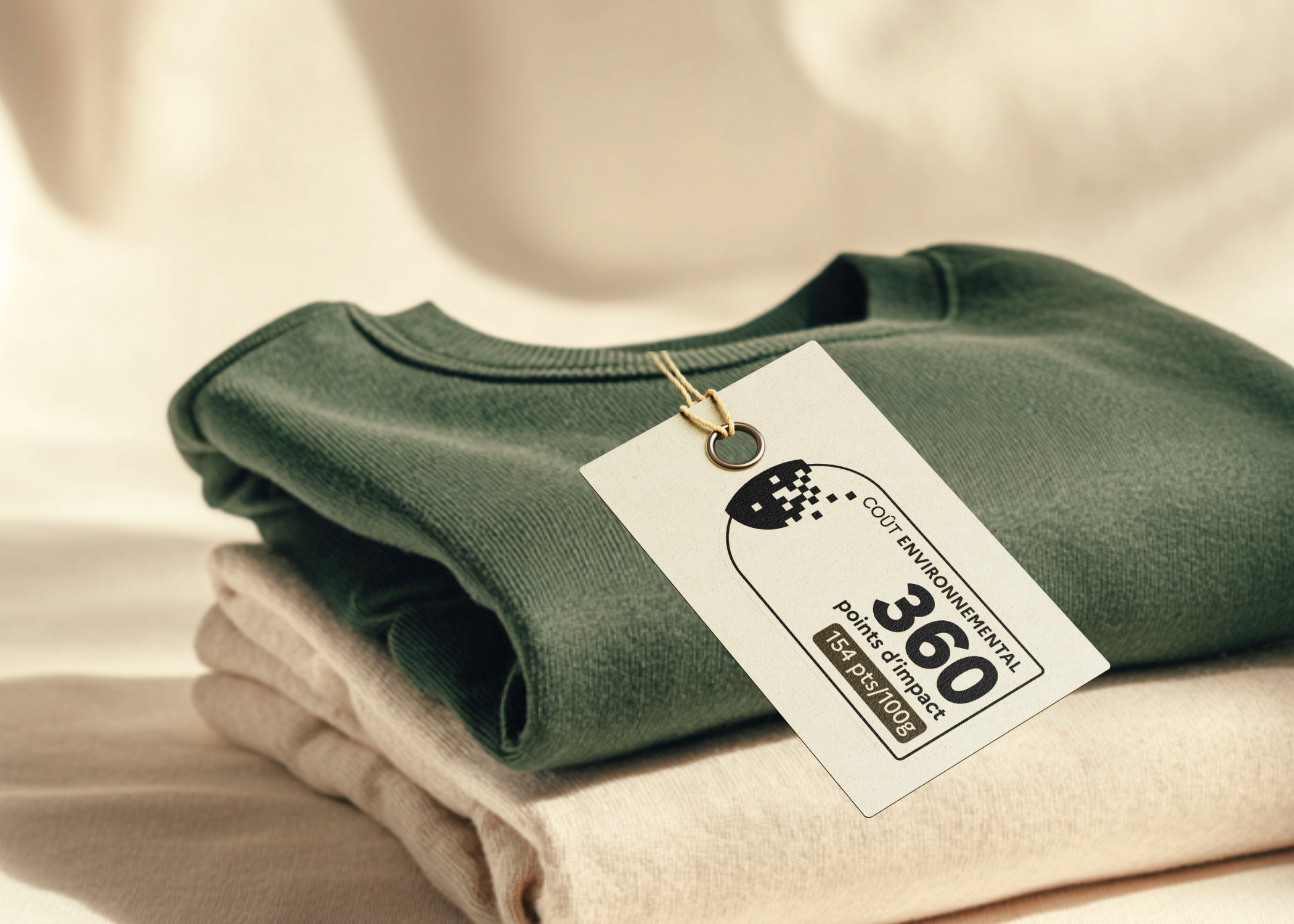
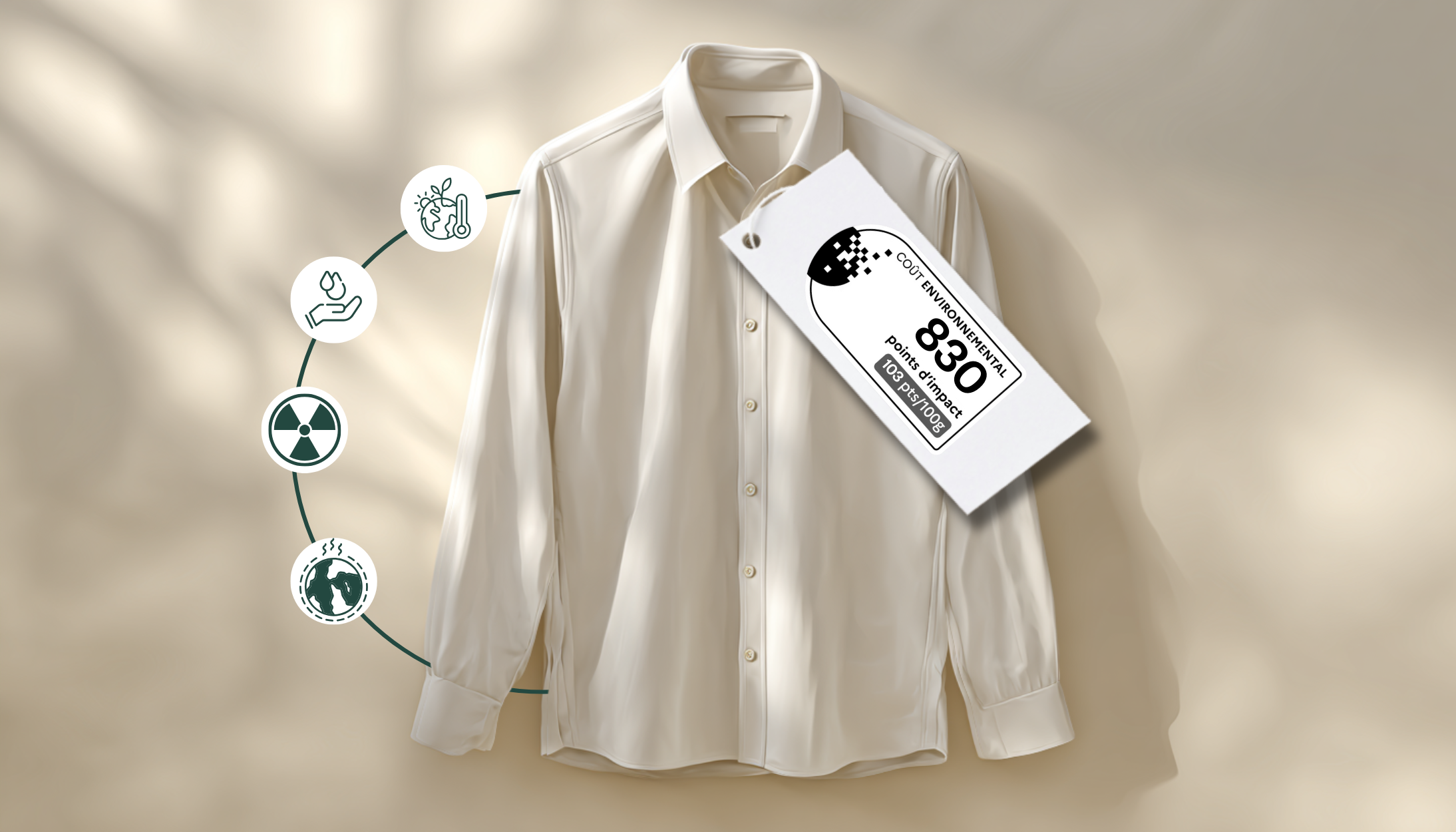


.png)











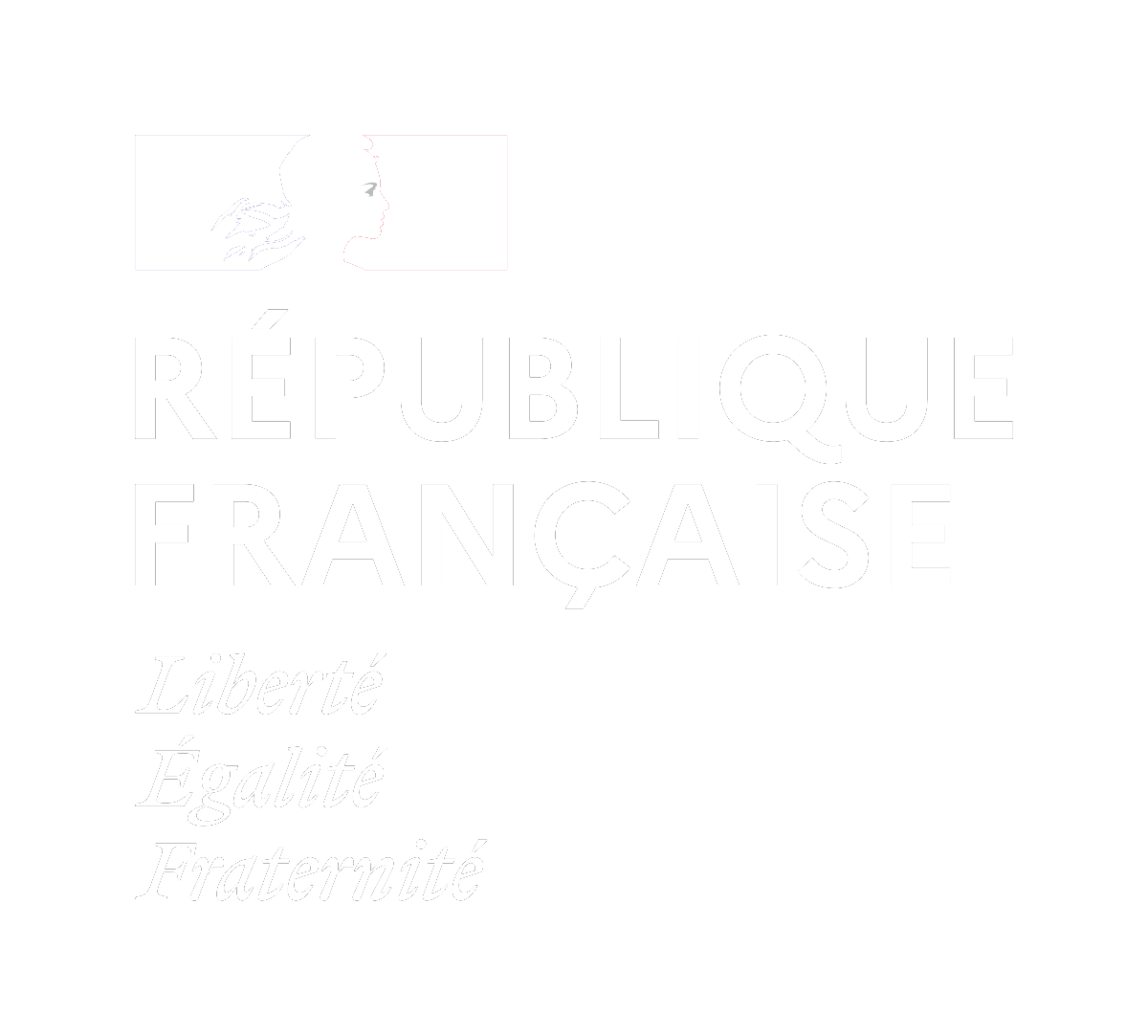
.png)
.svg)